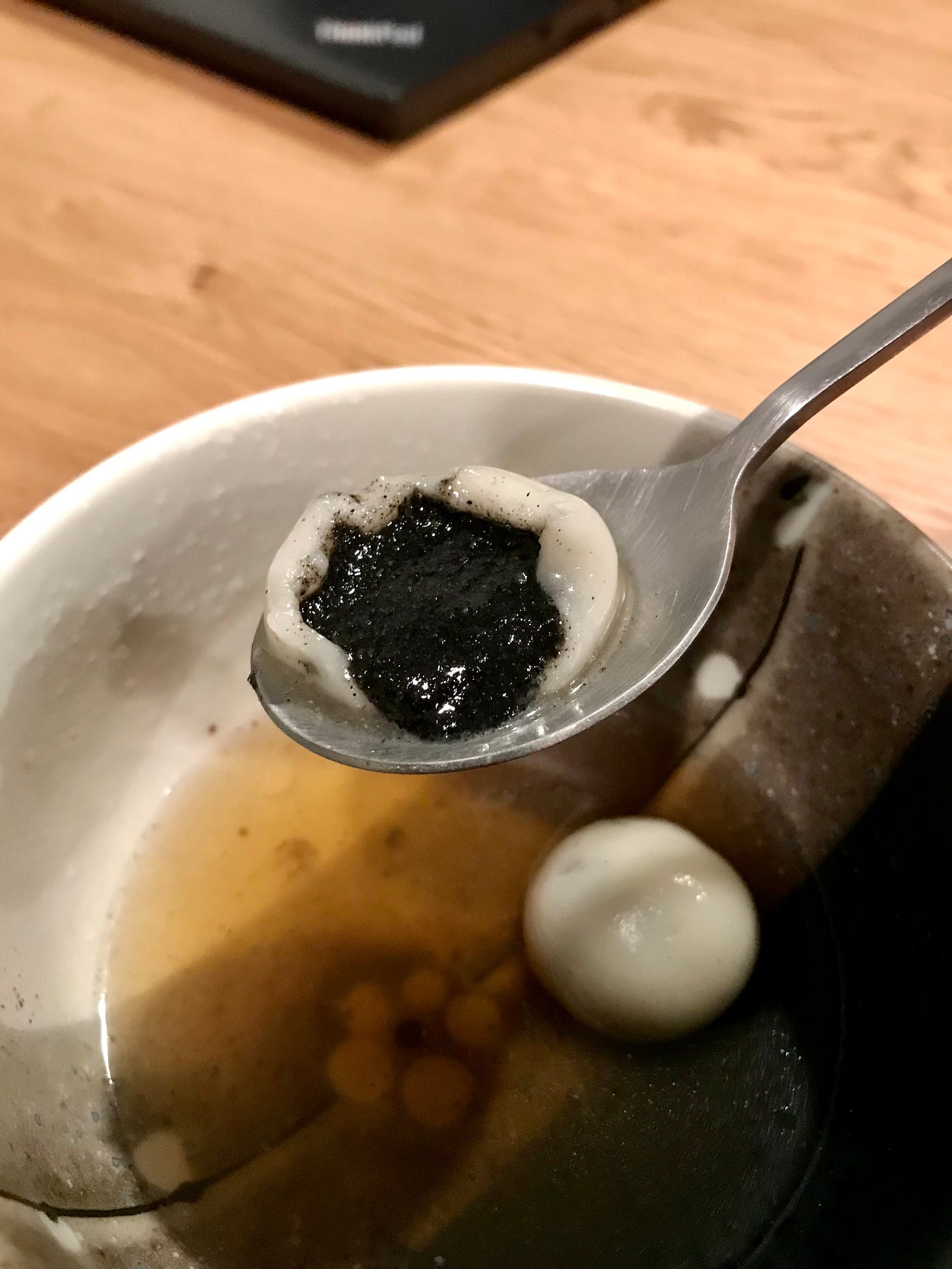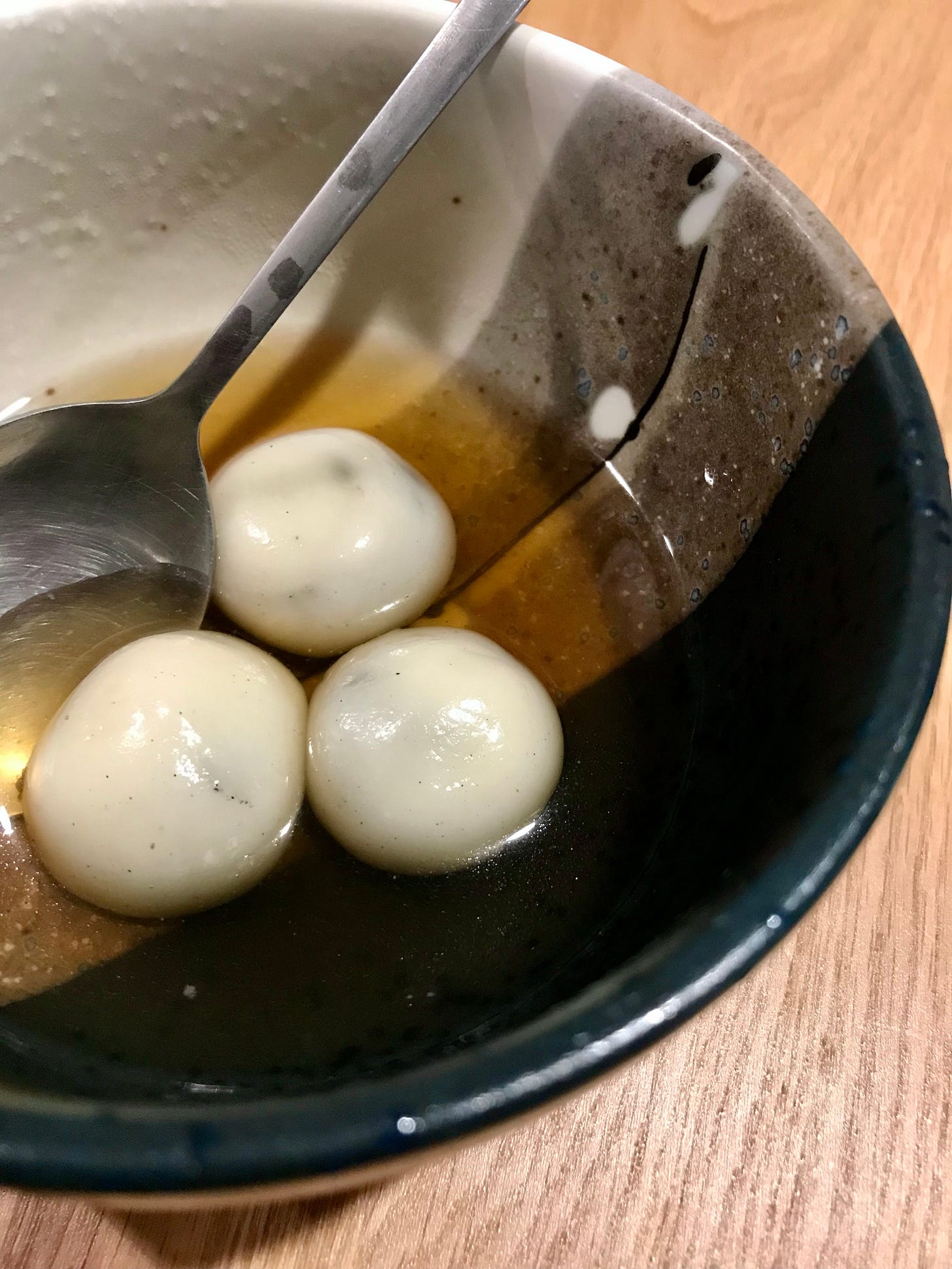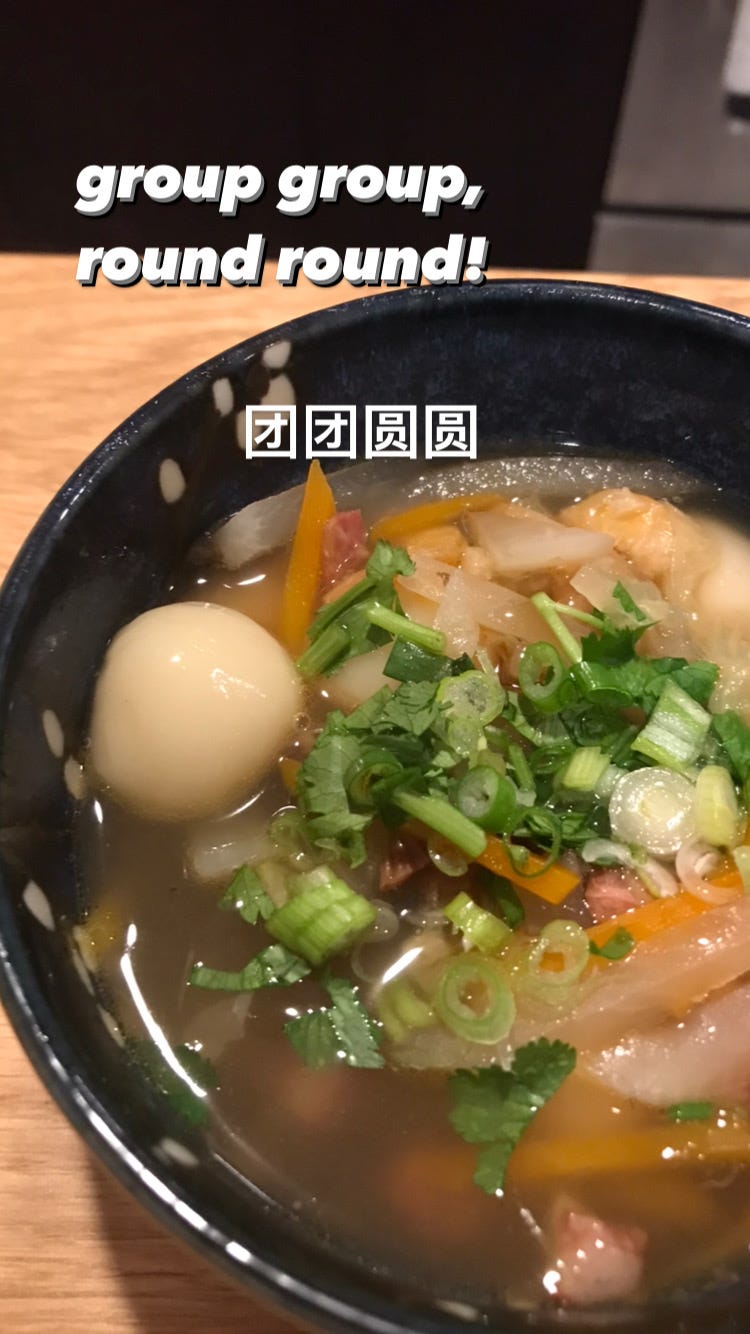I’m going to try once again to make this newsletter casual, an attempt failed with my first entry (maybe it’s just in my nature?). This new segment, for lack of a better title, will be an inquiry on “What-I-Cooked-This-Week-and-What-I-learned-from-it”, a format that will likely recur when I have nothing else more interesting to share. It will also be a personal discipline on being more nonchalant with my sharing and prioritizing process over product. Because that’s a part of you, too, as my therapist tells me. I think that’s how that works.
What better way to kick off this series than with the best holiday spread of the year: Lunar New Year. That’s right, forget your one-note Thanksgiving table with dry poultry, triple-carb sides, and no acidic relief save for one paltry bowl of saccharine cranberry sauce. Superbowl potluck where everyone just brings chips and dip? Hard pass.
This New Year’s, I’m diving deeper into the significance of the dishes that always hit the table during our weeks-long celebration dinners. And the more I dig, the more I see that many of these culinary traditions are rooted in a Chinese obsession with “good fortune” and cheesy wordplay – or, as I’d like to think, ancestral dad jokes. But perhaps, I shouldn’t refer to them as such because as my partner sternly reminded me, Chinese dads too often get credited for the culture while moms do all the cooking. So yes, down with the patriarchy!
On that note, here’s what I ate and cooked these past two weeks to ring in the New Year, along with their attached puns.
*Cue poor-quality Instagram photos*
qīng zhēng yú, 清蒸鱼 (cantonese steamed fish)
A classic, Southern-Chinese staple enjoyed year-round but especially during New Year's feasts due to their auspiciousness (a word I’m coming to love). In Mandarin, the saying goes, “nián nián yǒu yú!” (年年有余), which roughly translates to, “year after year, let there be abundance/surplus”. The Mandarin character for surplus (余) is a homophone with the character for fish (鱼), so fish has become known bring in prosperity. To eat fish (from head to tail) is to never lack, to never be hungry.
braised abalone with shiitake mushroom and fish maw
Abalone is somewhat of a textural obsession in East Asia and due to its difficulty to procure (they can be quite pricey), it’s a delicacy reserved for banquets and special occasions. Its Chinese characters, 鲍鱼 (bàoyú), sound a lot like the words for “guaranteed abundance and wealth”. My partner’s mom (who I refer to as a-yí) marinated and hydrated the abalone for 24 hours before braising them with shiitake mushroom and fish stomach (more texture!).
shǒu sī jī (hand-shredded chicken)
Chicken, like most meats, often don banquet tables because for many of those in my parents’ generation, animal meat was much harder to come by and considered a luxury. Jī (鸡), the Mandarin word for chicken, sounds like luck or fortune (吉). Many Cantonese families enjoy chicken whole and poached, then served with an addictive ginger-scallion sauce. This year, Jennifer a-yí prepared it poached and shredded by hand. Easily my favorite dish from the spread.
tāngyuán, 汤圆
Tāngyuán is enjoyed on Lantern Festival, the night of the first full moon of the year, which marks the last official day of celebrations. I still have the image of an evening sky filled with paper lanterns in Taiwan etched in my memory from my childhood. We light lanterns to honor our ancestors and as a meditative act of releasing our past. Once again, this dish’s good fortune is based on wordplay – tāng (soup) sounds like tuán (group, or family) and yuán means round or circle. Thus, the dish holds a superstitious value for bringing family unity and togetherness. To have all the members of the family all together in the same house is prosperity, which is why Lunar New Year marks the largest global migration every year as millions travel back to their homes to see loved ones.
This year, my partner cooked up a savory tāngyuán soup with a medley of veggies, including shiitake mushroom, carrots, nappa cabbage, and onion (recipe from Made with Lau). I went with a dessert version – sweetened black sesame paste cradled by a pocket of perfectly QQ rice flour dough and served with a sweet ginger syrup.
luó bo gāo, 萝白糕 (daikon radish cake)
Luó bo gāo is a jab at the notion that cakes should only be saved for desserts. I like to describe them as “twice-cooked”, as they are first steamed until cooked through, then finished on the pan for a deeply-browned exterior. Maybe we should call them reverse-seared (on second thought, maybe we shouldn’t). Though you can easily find them served with a garlic-soy paste on the streets of Taipei, they are enjoyed during New Year’s celebrations due to their double-lucky value. In fact, most “cakes” are believed to be auspicious because the word for cake 糕 is pronounced exactly like the word for high and lofty, 高. Nián gāo (sweet rice cake) and yù tuo gāo (taro cake) are other celebratory cakes enjoyed during New Years. Made with Lau writes, “Chinese tradition has come to attribute cakes with higher success, rising happiness, better health, and prosperity.”
The spread goes on, with other sides and experiments like zhīma dàbǐng (Northern-style sesame bread), Peking goose, and siu yuk (Canto Crispy Pork Belly), though I’m unsure of what symbolic value they hold (if any). If anyone can help me find the puns, please comment below.
As the first generation born away from Taiwan, a lot of these customs and food traditions may often feel like nothing more than silly one-liners (or four character phrases) that you hear uncles heartily recite at family gatherings. We chuckle and cringe at the corniness, the awkward gap between translations. I’d like to think there is profundity behind every pun, hidden depth I’m only now beginning to search for and appreciate. (Though sometimes, it really is about getting that money.) Being apart from my parent’s home country, I’m in this strange predicament of being able to choose which parts of our culture to participate in and inherit. And this may have been the most festive I’ve gotten with LNY; I even cleaned the house with my partner and wore red to work (forgot I even had a red shirt). Since college, I’ve been gradually re-learning the traditions that colored my childhood the way it was – Qingming Festival, Mid-Autumn Festival, and everything in between. Each year is like a re-coloring of those shades, applying a new layer of paint over the past, overall making my calendar a little more… red, and tissue paper thin, with those big, bold numbers.
Thanks for indulging, happy new year, and in the words of Eric Sze,
”May you become the rich bitch you deserve to be this year”.









